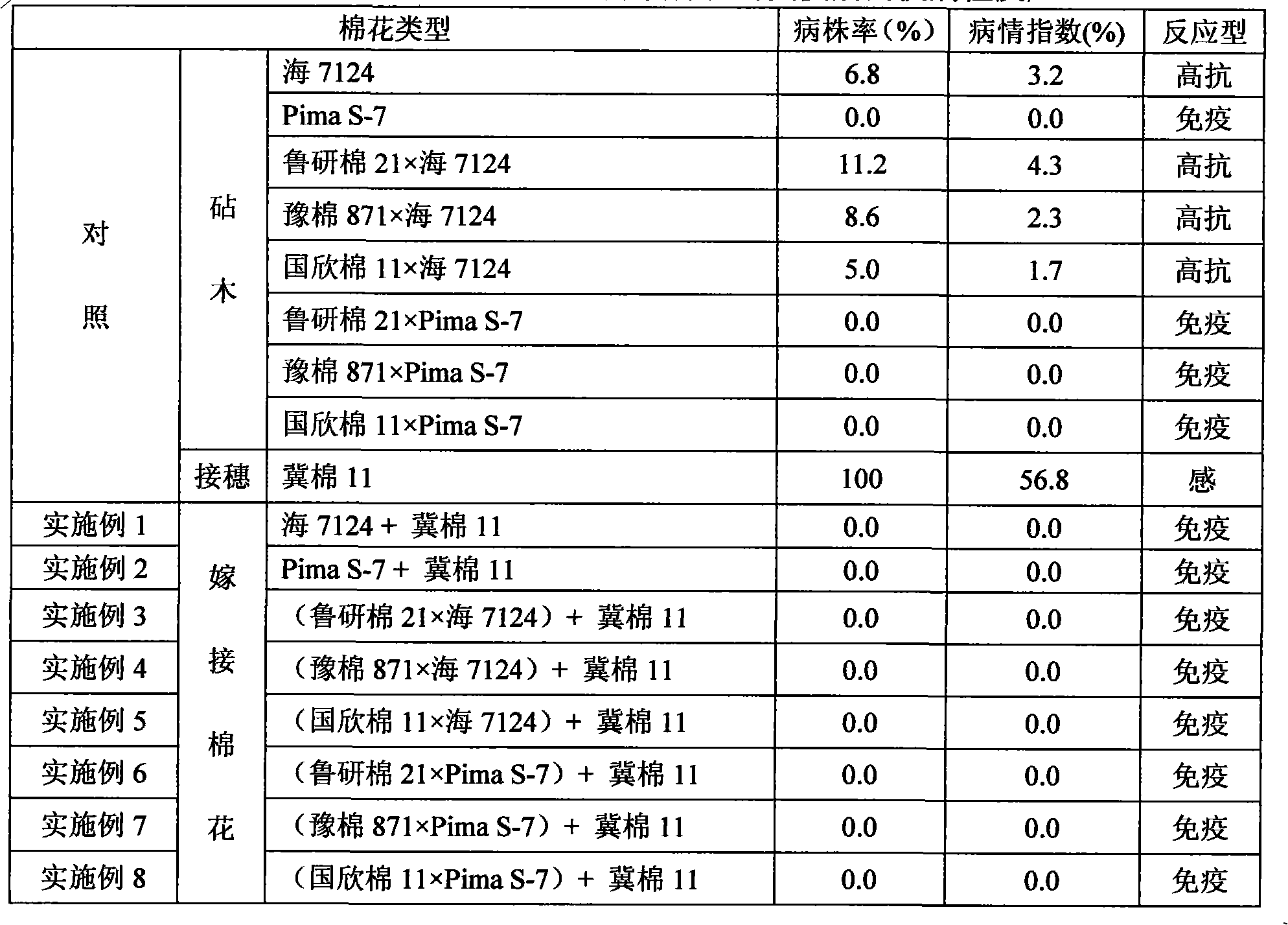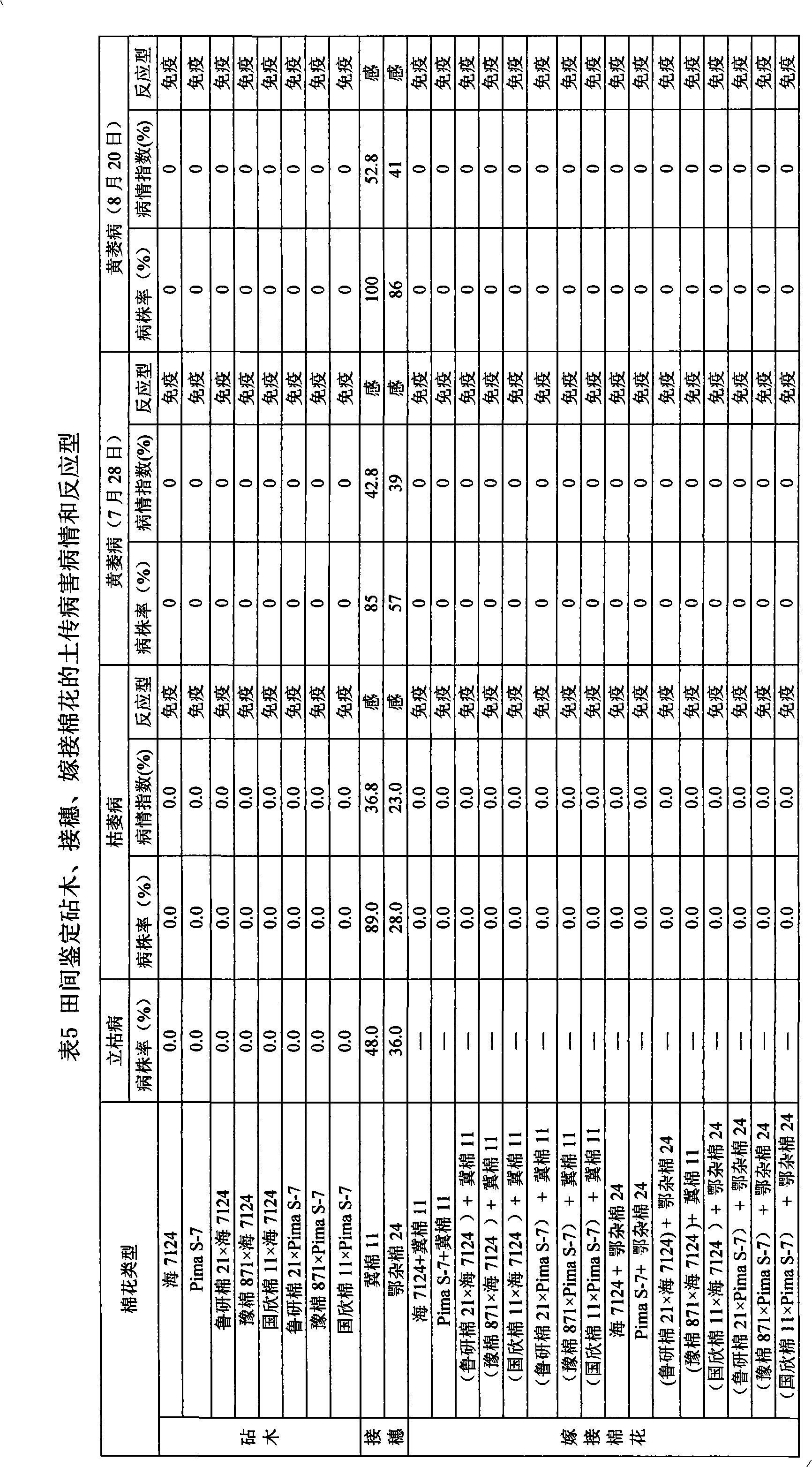Method for culturing cotton resisting micro-bundle disease
A disease and cotton technology, applied in the field of cultivating cotton resistant to vascular bundle diseases, can solve the problems of great influence, difficulty in prevention, and difficulty in popularization and application, and achieve the effects of high grafting survival rate, promotion of healthy development, and promotion of construction process
- Summary
- Abstract
- Description
- Claims
- Application Information
AI Technical Summary
Problems solved by technology
Method used
Image
Examples
Embodiment 1
[0032] Embodiment 1 A method of cultivating soil-resistant vascular disease cotton, comprising the following steps:
[0033] (1) Raising rootstock The sea-island cotton strain Hai 7124 was selected as the rootstock, and its cotton seeds were sterilized and sown in paper pots with substrates. Two cotton seeds were sown in each pot and placed in the greenhouse.
[0034] (2) Scion breeding The susceptible upland cotton line Jimian 11 was selected as the scion, and the selected cotton seeds were sterilized and sowed in paper pots equipped with substrates. Three cotton seeds were sown in each pot and placed in the greenhouse.
[0035] The cotton seed disinfection treatment method is: after soaking in 75% alcohol for 1 minute, wash 4 times with sterilized double water, then soak in 0.5% HgCl 2 After incubation for 5 minutes, wash 7 times with sterile double water.
[0036] The preparation method of the above-mentioned nutrient paper pot is as follows: mix vermiculite and sand after...
Embodiment 2
[0039] Embodiment 2 is a method for cultivating cotton resistant to soil-borne vascular diseases, which is basically the same as in Embodiment 1, except that the sea-island cotton variety Pima S-7 is selected as the rootstock.
Embodiment 3
[0040] Example 3 A method for cultivating soil-borne vascular disease-resistant cotton is basically the same as Example 1, except that the F 1 Substitute rootstock.
PUM
 Login to View More
Login to View More Abstract
Description
Claims
Application Information
 Login to View More
Login to View More - R&D
- Intellectual Property
- Life Sciences
- Materials
- Tech Scout
- Unparalleled Data Quality
- Higher Quality Content
- 60% Fewer Hallucinations
Browse by: Latest US Patents, China's latest patents, Technical Efficacy Thesaurus, Application Domain, Technology Topic, Popular Technical Reports.
© 2025 PatSnap. All rights reserved.Legal|Privacy policy|Modern Slavery Act Transparency Statement|Sitemap|About US| Contact US: help@patsnap.com



